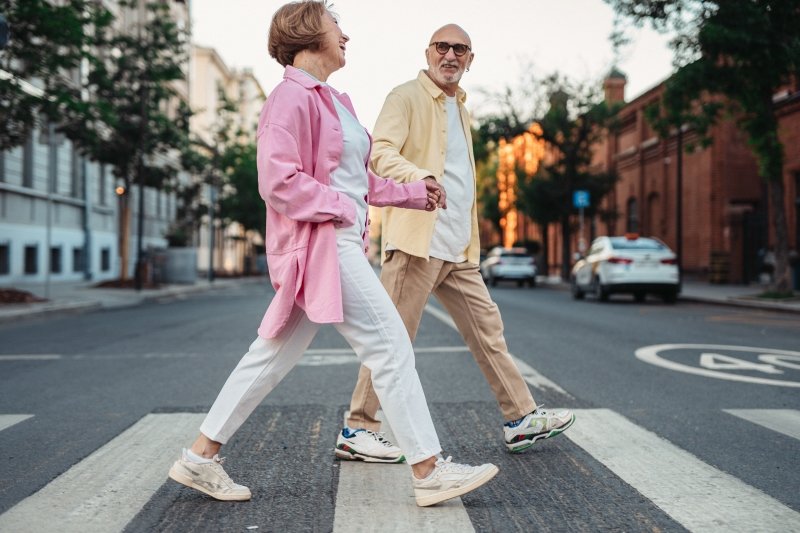Falls Prevention Strategies in Aged Care and for the Elderly
Fall Prevention Strategies for Aged Care and the Elderly - in this guide:
The importance of fall awareness and mitigation
Why are older adults prone to falling?
7 Tips to Help Prevent Falls Among Seniors
1. Make sure your living space has enough light
2. Remove any tripping hazards in your home
3. Place non-slip mats inside your house
5. Stay active to improve your balance
If you do fall, what should you do?
How Tunstall’s Connected Care solutions can help with falls management
The importance of fall awareness and mitigation
Falls are one of Australia's biggest contributors to hospitalised injuries, says the Australian Institute of Health and Welfare. They are even more common among older adults, especially those living alone and they are twice as likely to report having fallen compared to those living with others. If you live away from your family, it is important to know how to prevent falls and fall-related injuries. Falls can cause severe injuries such as hip fractures, broken bones, and head injury/trauma, which can lead to disability and loss of independence.
Tunstall wants to ensure you are able to live independently with minimal help so you can enjoy your life to the fullest. To help you achieve independence, we created this article to help you understand the causes and factors for falls and learn about strategies that may reduce your chances of falling or getting hurt if you do fall.
Why are older adults prone to falling?
Falls are among the most common injuries affecting older adults and are often caused by loss of balance, weakness, poor vision, dizziness, weaker muscles, and unsteady gait. Underlying medical conditions such as arthritis, high blood pressure, stroke, Parkinson’s disease, dementia, diabetes, and osteoporosis can also be factors for falls. Other risk factors include environmental hazards like slippery floors, poorly lit areas, and stairways without handrails.
Even minor changes in vision and sound can cause dizziness and balance difficulties. Your eyesight could also change due to cataracts, glaucoma, macular degeneration, diabetic retinopathy, or other conditions. This makes it harder to see where you're stepping and to notice potential hazards.
7 Tips to Help Prevent Falls Among Seniors
1. Make sure your living space has enough light
The simplest thing you can do to make sure you prevent any accidental falls is to ensure your house has plenty of light available throughout the whole day. Lighting is such a huge factor in safety and security and it might even save your life. Lighting helps people see better in dark places, like stairwells, elevators, basements and garages. Here are some things you can consider for your home
Place your switches near the doors so you'll have easy access to the lights whenever you enter a room. Not seeing anything you can trip over or bump into will inevitably lead to a slip or a fall.
Give motion sensors a try. If you are forgetful, having automatic sensors that turn on your lights when you walk into a room will make sure you'll have enough light anywhere you go inside your house.
2. Remove any tripping hazards in your home
Avoiding falls can be as easy as removing anything that you may bump into in your house and cause loss of balance. Even the smallest things like a remote or a grandchild's toy can cause a fall if left haphazardly on the floor. As people get older, weaker muscles are to be expected so simple obstacles can cause a loss of balance. Make a habit of removing any small trinkets on the floor and spend a few hours a week cleaning up around the house. This cleaning routine may even be one of your physical activities for the week.
Aside from clutter on the floor, you should also consider rearranging your furniture if you find yourself bumping into them often. Sharp edges should also be removed to reduce the risks of severe accidents if you do fall. Electrical cords can also be taped down because they can easily trip you when left in the middle of the room.
The risk of falls is not limited to the home environment. Even controlled conditions such as an aged care facility, or facilities of other primary care or health care providers, such as those provided by Queensland Health, may pose environmental risks to the elderly or infirm. Despite precautions being taken in these facilities to mitigate fall risks to the greatest extent possible, it's always advisable to exercise caution in unfamiliar environments to avoid unnecessary fall risks.
3. Place non-slip mats inside your house
One of the top reasons for falls among older adults is slips. A slip happens when someone loses their balance due to an external factor. Common causes of slips and loss of balance are trips on wet or icy sidewalks, stumbling on steps, tripping over objects, and wet surfaces inside the house. Non-slip mats are one of the cheapest ways to make sure you are less likely to slip inside your house. These mats are most especially useful inside your bathroom where falls are most likely to happen due to slippery floors.
4. Wear comfortable shoes
Sometimes, it's not your body or what's around you that's the problem. Sometimes it depends on the shoes you are wearing. No matter how meticulously you remove the clutter around you, if you are wearing shoes that don't have non-slip soles or if they don't fit you properly, they are falling hazards on their own. Wear suitable shoes that are well-fitted and that provide plenty of support. If you are wearing thongs or sandals, wearing socks can help provide the needed support.
5. Stay active to improve your balance
Physical activity reduces the risk of falls, among other benefits specifically for seniors. A study published in the International Journal of Behavioral Nutrition and Physical Activity, states that well-designed exercise programs have reduced the rate of falls among the elderly by about 25%. Additionally, regular exercise can improve other health conditions such as high blood pressure and diabetes, among others.
Tai Chi is an example of an exercise that improves balance, coordination and flexibility. This form of movement, which originated in China hundreds of years ago, involves slow movements performed in standing positions. New Zealand has even introduced a national-level exercise program incorporating Tai Chi classes for fall prevention.
If this is not your cup of tea and you want to explore other workouts to fit your lifestyle, check out this article: Balance Exercises for Seniors: Prevent Falls and Injuries
Before starting any physical activity, be sure to talk to a medical professional about what fitness activity is safe for you. If you do decide to start exercising, make sure it’s something you enjoy doing. You don't want to feel like you're being forced into it. Also, talk to your doctor about how much exercise you should be getting. Your doctor can help review and determine what type of exercise is best for you based on your health history.
6. Strengthen your bones
Fall-related fractures are often caused by low bone density which means your bones are brittle and they are prone to breaking. Falls can lead to broken ribs, ankles, wrists, and hips but if you take care of your bones these can be prevented. Bone health depends on many things, including genetics, diet, exercise, and lifestyle choices. But there are easy ways you can help protect your bones:
Make sure to get plenty of calcium and vitamin D supplementation. As you probably know by now, calcium helps build stronger bones, and vitamin D is the perfect partner because it helps the body absorb more calcium. To get the recommended daily amount, make sure to eat dairy foods such as cheese, milk, yoghurt, and other juices fortified with calcium. Vitamin D supplementation can also be taken. One of the best ways to get vitamin D naturally is sunlight exposure but make sure to wear sunscreen and protective clothing to avoid sunburn
Do not consume alcohol and tobacco as they both cause dehydration that will lead to weakened bones. These substances can even affect brain function which will make daily functions such as walking difficult to perform.
7. Use assistive devices
If you have difficulty walking, a cane or a wheelchair will help you move around. If you have a bad hip and a history of falls, wearing hip protectors can help reduce the risk of fractures. Aside from these physical assistive devices, though, you should also consider investing in a medical alert system. Tunstall offers personal alarms and fall detection devices for seniors and people living with a disability, they also offer Duress Watch and SOS Watch for Elderly, so you can call for assistance anywhere you are. These devices include GPS location and can even come with fall detection which automatically alerts our Customer Care Centre to assist you during an emergency. If you want to continue living independently and safely, these alarms can be life changing, even life saving.
If you do fall, what should you do?
Most falls can be prevented or minimised through good home safety practices such as maintaining balance, avoiding slippery floors, wearing shoes with suitable grip, and keeping window sills free of clutter. However, some falls cannot be avoided, and others can lead to serious consequences. For example, a fall onto the hard ground can cause a trauma fracture, while a fall downstairs could result in broken hips and legs. A fall onto soft flooring, such as carpet, can cause bruising, sprains and strains.
Older adults who have had a recent fall or any severe previous falls should seek immediate medical attention. This includes those who experience pain, dizziness, loss of consciousness, confusion, weakness, numbness, tingling or difficulty walking. After a fall, you should immediately report the incident to your doctor or local emergency services.
How Tunstall’s Connected Care solutions can help with falls management
Falls, slips, and trips may happen to a large percentage of older adults but this shouldn't mean you should hinder yourself from living your life to the fullest because of fear of injuries. Tunstall's range of Connected Care solutions is designed to empower older adults in their daily life to make sure you have the support and assistance from health professionals whenever and wherever you need them. Tunstall can offer tailored solutions to your specific needs, so don't hesitate to contact us today.
Keep reading: Living Alone? How a Fall Detector Pendant Can Save You
Get your personal alarm today:







